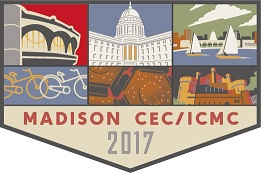Speaker
Description
Fully superconducting rotating machines produce the advantages of lightweight, compactness and high efficiency compared with conventional ones. When those are applied to electric propulsion aircrafts, tremendous innovation will be brought about to air transportation. To realize that, it is necessary to reduce the ac loss in superconducting armature windings, also to enhance the current capacity and to develop cooling systems with lightweight and availability of cold heat of liquid fuel such as hydrogen and methane. Our research group has developed these required techniques for REBCO superconducting transformers so far. The ac loss of REBCO superconducting windings was reduced by laser-scribing of a REBCO tape and its special winding. The current capacity of windings was enhanced without increment of ac loss by forming transposed parallel conductors. Turbo-Brayton refrigerators with neon gas as a working fluid were also developed. The compressor and expander both had turbines with a non-contact magnetic bearing. As a result, a 3φ-66kV/6.9kV-2MVA model transformer was successfully built with REBCO superconducting tapes. Currently, we are developing fully superconducting rotating machines applying the developed techniques to field and armature windings under the support of JST. Our first task was the verification of the applicability of ac loss reduction technique for transformer windings to the armature windings. The current sharing properties among the filaments in laser-scribed REBCO tapes wound into the armature winding of a small test motor were investigated during the operation in liquid nitrogen at 77K. The almost even current sharing among the filaments suggested the fact that no shielding current was induced and the ac loss was reduced in proportion to the filament width since the shielding current is a loop current. In addition we are developing superconducting triaxial cables. In this conference we will introduce out recent works in relation to the development of electric propulsion aircrafts.
